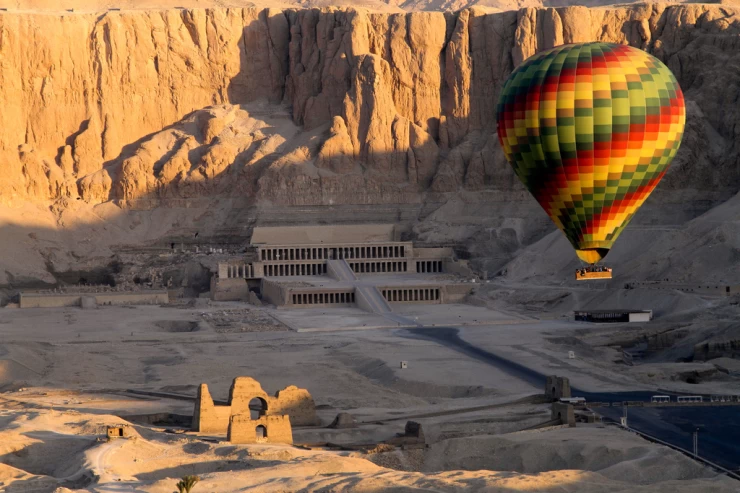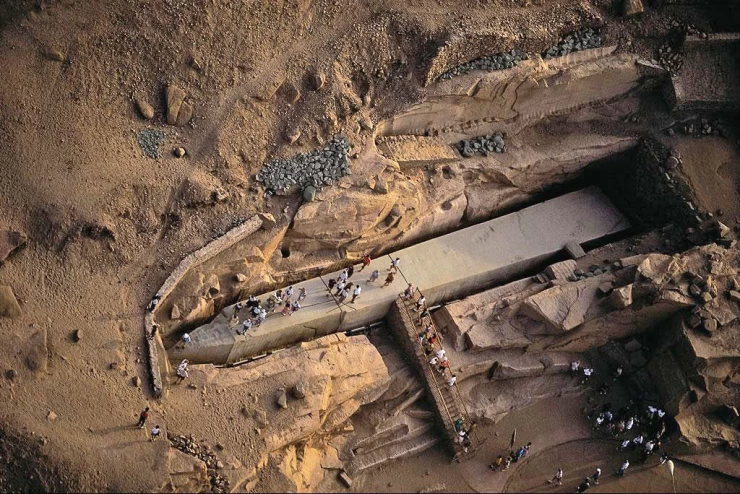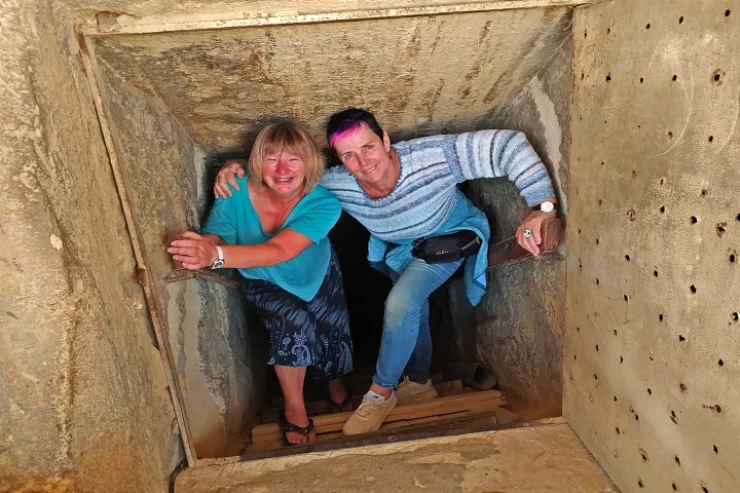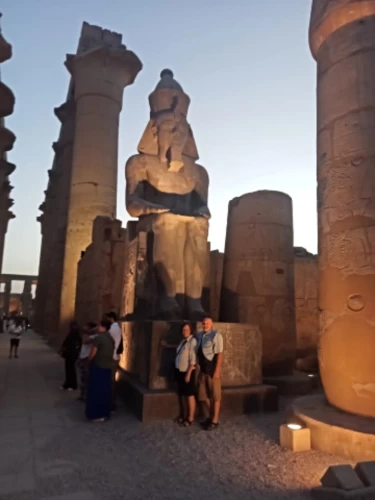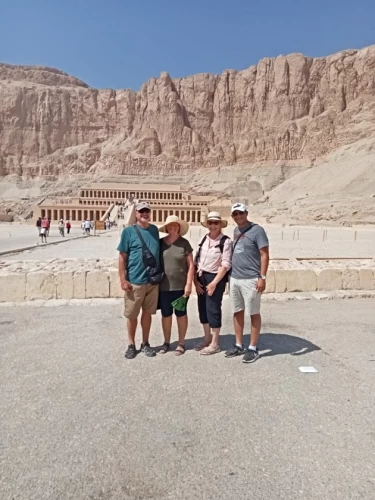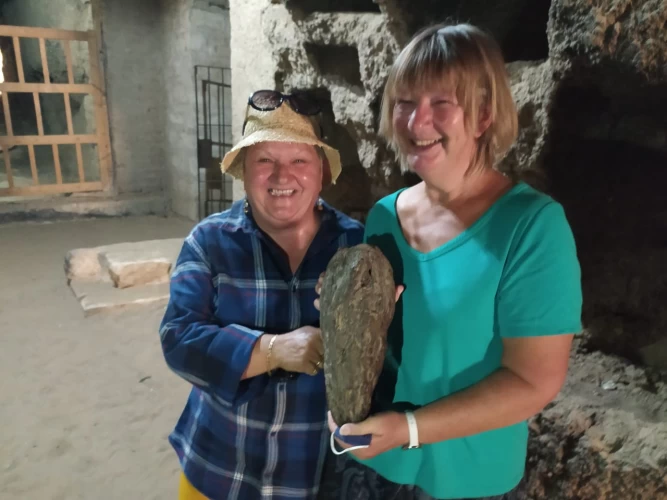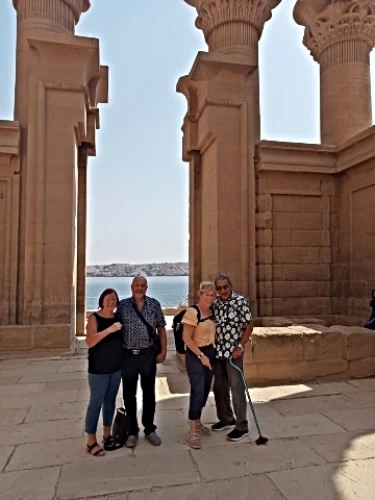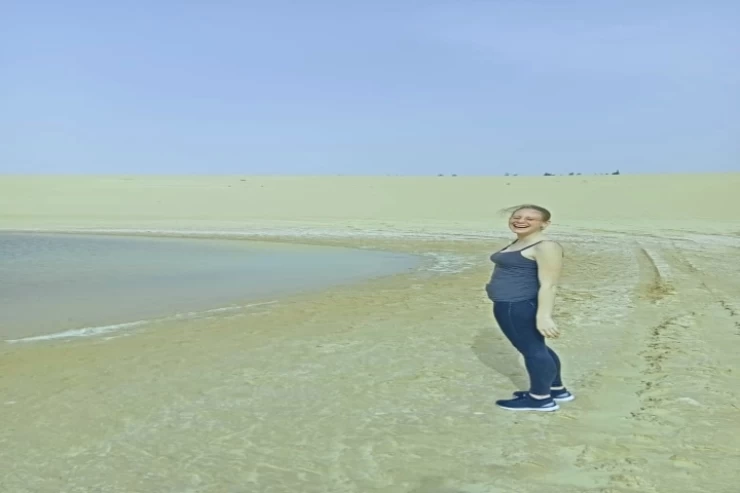On the last day aboard your cruise ship and after having a delicious breakfast, we culminate our adventures along the Nile River with a visit to Luxor, which is separated into its east and west banks.
We start with the west bank of Luxor, where we will have the opportunity to see up close and explore the Temple of Queen Hatshepsut. To perform rituals that might aid her in the afterlife, Queen Hatshepsut built the monastery. The region was given the present Arabic name Al-Deir Al-Bahri in the seventh century AD after the Copts adopted this temple as their monastery.
Our second step will be to the Valley of the Kings; it is divided into eastern and western valleys. Of the two, the eastern portion is more well-known because the western valley has fewer tombs. The Valley of the Kings has over sixty complete tombs in addition to twenty incomplete tombs that are merely pits.
After that we will head to the Colossi of Memnon, where Amenhotep III, who lived in the 14th century BC, is shown seated with his hands on his knees and facing east - or, more recently, southeast - towards the Nile in two similar statues. His mother, Mut Im Wia, and his wife, Tiye, are depicted as short figures at the front of the throne, next to his legs. the amazing Hapi, the god of the Nile, which is shown on the side panels.
Then transfer to the east bank of Luxor where you can see two of the magnificent temples that attract millions of tourists for its profound civilization, we will visit the Temple of Karnak Karnak Temple is one of the most important monuments of Luxor, located just 3 kilometers north of the famous Temple of Luxor. Its construction began during the reign of King Seti I and continued until its completion during the reign of King Ramses II. Dedicated to the cult of the Holy Trinity—Amun-Ra, his wife Mut, and his son Khonsu—this temple was one of the most well-known in Thebes for the adoration of the gods.
We will culminate our 4-day excursion with a visit to Luxor Temple, which the ancient Egyptians called Luxor Temple “Ibit Reset”, meaning “Southern Sanctuary”, due to its location within ancient Thebes (present-day Luxor). Approximately three kilometers to the south of the temple is the temple of Karnak, which was formerly connected to a route that was flanked by ram-headed and sphinxes. The earliest traces of this temple date back to the 18th Dynasty (ca. 1550 - 1295 BC).
As per your desire, you will be taken to the Luxor railway station, airport, or any Luxor hotel.
Breakfast included



